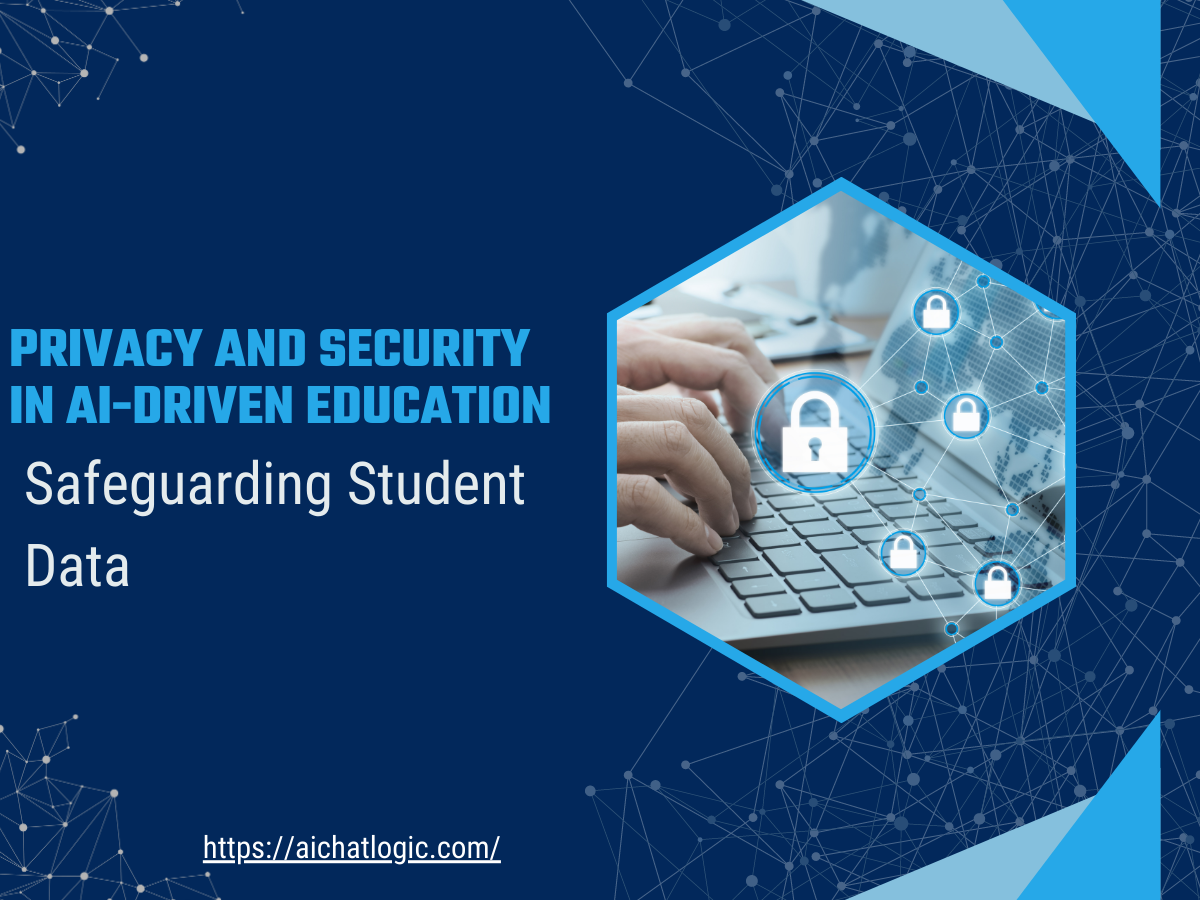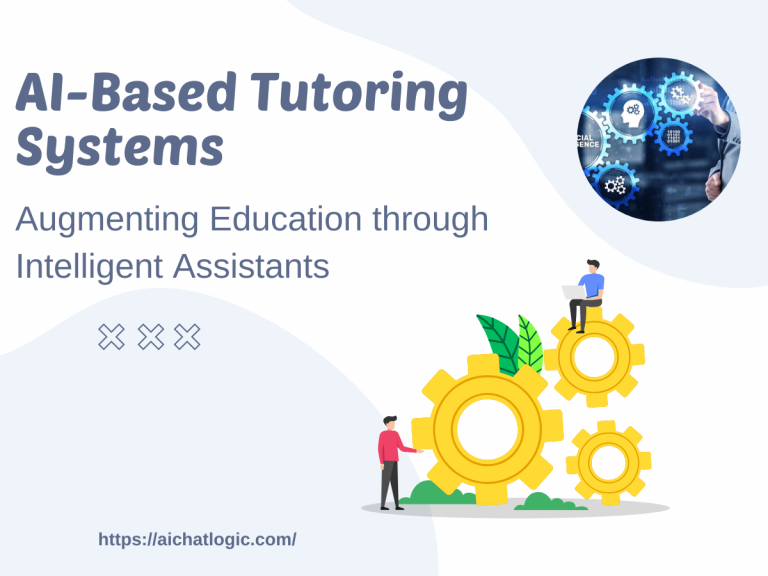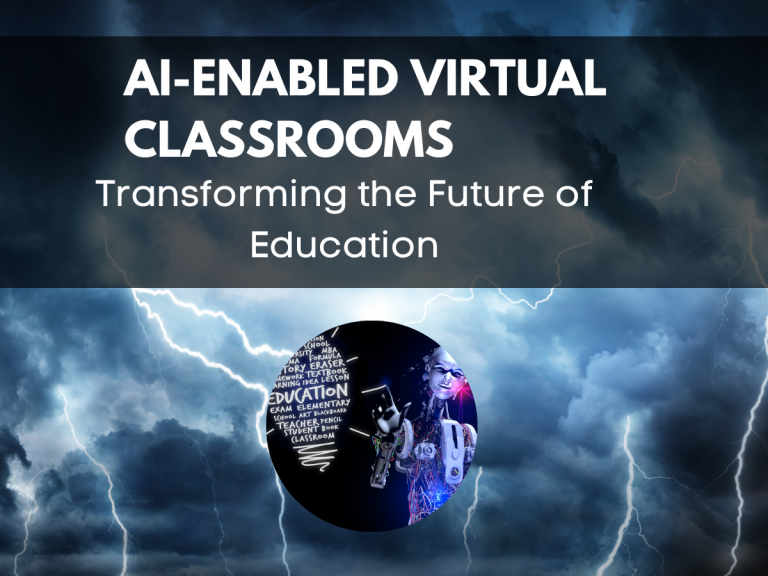1. Introduction: The Intersection of AI and Education
As technology continues to evolve, AI has made significant inroads into the field of education. AI-driven educational platforms leverage algorithms and machine learning to personalize the learning experience for each student, providing tailored content, adaptive assessments, and intelligent feedback. While these advancements offer immense benefits, they also raise concerns regarding the privacy and security of student data.
2. Understanding Privacy and Security in AI-driven Education
Privacy in AI-driven education refers to the protection of personally identifiable information (PII) and ensuring individuals have control over their data. Security, on the other hand, focuses on safeguarding data from unauthorized access, cyber threats, and data breaches.
3. Data Privacy Concerns in AI-driven Education
3.1 Informed Consent and Data Collection
One of the primary concerns in AI-driven education is the collection of student data without informed consent. Educational institutions must obtain explicit consent from students and their parents or guardians before gathering any personal information.
3.2 Data Storage and Encryption
The storage of student data requires robust security measures, including encryption, access controls, and secure server infrastructure. Proper encryption techniques ensure that even if data is compromised, it remains unintelligible to unauthorized individuals.
3.3 Third-Party Access and Data Sharing
Many AI-powered educational platforms rely on third-party services or applications for enhanced functionality. However, educational institutions must be cautious when granting access to student data to these third parties, ensuring they adhere to strict privacy and security standards.
4. Security Risks in AI-driven Education
4.1 Cyber Threats and Data Breaches
AI-driven educational systems become attractive targets for cybercriminals due to the wealth of sensitive student data they possess. Educational institutions must implement robust cybersecurity measures to mitigate the risk of data breaches and cyber attacks.
4.2 Unauthorized Access and Identity Theft
Weak authentication mechanisms and inadequate access controls can lead to unauthorized individuals gaining access to student data. This can result in identity theft, fraud, or other malicious activities.
4.3 Vulnerabilities in AI Algorithms
AI algorithms used in educational platforms are not immune to vulnerabilities. Adversarial attacks, data poisoning, or biased algorithms can compromise the integrity and security of the learning environment.
5. Legal and Ethical Considerations in Safeguarding Student Data
5.1 Compliance with Data Protection Laws
Educational institutions must comply with relevant data protection laws, such as the General Data Protection Regulation (GDPR) or the Family Educational Rights and Privacy Act (FERPA). These regulations provide guidelines on data collection, storage, and processing.
5.2 Ethical Use of Student Data
Responsible use of student data is of utmost importance. Educational institutions should ensure data is used solely for educational purposes and take measures to prevent data exploitation or profiling.
5.3 Transparent Data Governance
Transparent data governance policies establish accountability and trust. Educational institutions should clearly communicate their data practices, disclose how data is used, and provide avenues for individuals to exercise their rights over their data.
6. Best Practices for Ensuring Privacy and Security
6.1 Implementing Robust Data Protection Measures
Educational institutions should implement strong data protection measures, including data encryption, access controls, and regular security updates. This helps safeguard student data from unauthorized access.
6.2 Conducting Regular Security Audits and Assessments
Regular security audits and assessments help identify vulnerabilities and ensure compliance with security standards. Educational institutions should collaborate with cybersecurity experts to evaluate their systems and implement necessary improvements.
6.3 Promoting Digital Literacy and Cybersecurity Education
Educating students about digital literacy and cybersecurity best practices empowers them to protect their own data. Incorporating these topics into the curriculum can help create a generation of responsible digital citizens.
6.4 Establishing Strong Data Governance Policies
Clear data governance policies ensure that student data is handled responsibly. Institutions should define roles and responsibilities, establish protocols for data access, and regularly review and update their policies.
6.5 Fostering Collaboration between Educators and Technology Providers
Collaboration between educators and technology providers promotes the development of privacy-centric educational platforms. Educators should actively engage with technology providers to ensure privacy and security are prioritized.
7. The Role of AI in Enhancing Privacy and Security
7.1 AI-powered Data Anonymization Techniques
AI can utilize anonymization techniques to protect student data by anonymizing personally identifiable information. Employing techniques like differential privacy and data masking allows for the preservation of privacy while enabling effective analysis.
7.2 Intelligent Monitoring and Threat Detection
AI algorithms can monitor system activities and identify anomalous behavior or potential security threats. Real-time monitoring helps detect and mitigate security incidents promptly.
7.3 Privacy-Preserving Machine Learning Models
Privacy-preserving machine learning techniques, such as federated learning or homomorphic encryption, enable collaborative analysis of data without sharing the raw data itself. This protects student privacy while still benefiting from the power of AI.
8. Building Trust and Transparency in AI-driven Education
8.1 Clear Communication about Data Practices
Educational institutions should maintain transparent communication about their data practices. Students, parents, and educators should be informed about the types of data collected, how it is used, and the security measures in place.
8.2 Empowering Students with Data Control and Ownership
Giving students control and ownership over their data builds trust. Educational platforms can provide options for students to review, edit, or delete their data and ensure their preferences are respected.
8.3 Engaging Stakeholders in Privacy Discussions
Open and inclusive discussions involving students, parents, educators, and policymakers help shape privacy policies and ensure they reflect the needs and concerns of all stakeholders. Collaboration fosters a sense of ownership and shared responsibility.
9. Conclusion
As AI continues to transform education, safeguarding student data privacy and security becomes crucial. Educational institutions must prioritize privacy-centric practices, implement robust security measures, and foster transparency to build trust with students, parents, and the broader community. By embracing responsible data governance and leveraging AI for privacy enhancement, we can create an educational landscape that not only harnesses the benefits of AI but also protects the fundamental rights of students.
FAQs (Frequently Asked Questions)
1. How can educational institutions ensure compliance with data protection laws?
Educational institutions should familiarize themselves with relevant data protection laws and implement policies and procedures to adhere to these regulations. This includes obtaining informed consent, securely storing data, and providing individuals with control over their data.
2. What measures can be taken to prevent unauthorized access to student data?
To prevent unauthorized access, educational institutions should implement robust authentication mechanisms, access controls, and encryption techniques. Regular security audits and employee training on cybersecurity best practices are also essential.
3. Are there any emerging technologies that can enhance privacy in AI-driven education?
Yes, emerging technologies such as federated learning and homomorphic encryption allow for privacy-preserving analysis of student data. These techniques enable collaborative data analysis without compromising individual privacy.
4. How can students be educated about digital literacy and cybersecurity?
Integrating digital literacy and cybersecurity education into the curriculum can empower students to protect their own data. Educators can incorporate topics such as online privacy, safe browsing, and responsible data sharing into their lessons.
5. What steps can parents take to protect their child’s data in AI-powered learning environments?
Parents should familiarize themselves with the privacy policies of educational platforms and understand how their child’s data is collected, stored, and used. They can also discuss privacy concerns with the school administration and advocate for transparent data practices.










+ There are no comments
Add yours